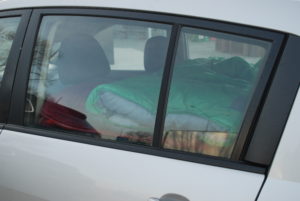Studies on random violence and terrorist acts have found that individuals and groups who are marginalized may be more at risk. Persecution and humiliation and child trauma or neglect was more common in the history of people arrested for a violent crime. The recent death of a peaceful protester in Charlottesville is tragic for the family and community, and the nation. (bloomberg.com/2017-08-14)
We are becoming even more divided since the difficult campaign season but marginalizing young adults may just lead to more violence. A group that has appeared to be supportive of or producing the Nazi themed memes has a petition up to help save them from oppression, whether it might be satire about saving Pakistan is unclear. (change.org/p/the-recognition-and-freedom-of-the-kekistani-people)
of-the-kekistani-people)
Update, 8/18/2017, I’ve looked into this group further and it does seem to be a satire group whose artwork got taken up by other extreme right wing groups.. Their group’s name and artwork was not visible in any of the video footage that I saw of the event at Charlottesville. And a police officer has stated that the event may have been allowed to happen as a political move to show that the current administration is inciting violence. If the police officer is correct than the Charlottesville administration was the ones inciting it, but they deny it. Snopes has a debunking statement up about the police officer’s claim. Ever since the site debunked a story by suggesting it was simply a math anomaly I’ve been suspicious of their results – yes odd math happens but that is not a “debunking” – you’re not supposed to simply throw out the unusual experimental results simply because they fall at outside of the 98th percentile. See this article: (yournewswire.com/charlottesville-inside-job) there’s a Snopes factcheck of it that says its false: (snopes.com/were-police-told-stand-down-charlottesville)
Young adults who are just looking for recognition and freedom from “normies” may need more variety of role models to follow. When “normal” society is the bad guy and Trump is the savior figure in the artwork – we all have a problem.
There are a few articles on my website about Zionism and World War II but the information is not in support of Hitler. Anti-Zionist at the time of World War II included Jewish people, such as Albert Einstein. There was collusion between Hitler and the Zionists at the time which may have left more of the non-Zionists Jews at risk for the concentration camps while a few left early for Palestine and they were allowed to take their possessions. It all may involve banking and the national monetary system that Germany put in place after WWI cost them a large amount in reparations. History is complicated and the winners write the books.
I’ve been working on a health information website, a directory of links to other resources with narrative about their value. It started out as an example of a policy manual for preventing harassment and discrimination in the workplace.
“Violence is bad, um’kay.” (A paraphrase of a line from Southpark.)
The footnotes aren’t renumbered for this yet, either. but here is a section regarding random violence and humiliation of others. When one is singled out for persecution it is warning all the others in the group and other marginalized groups, that if they aren’t careful then they could get the same treatment – so follow the group’s expectations – their norms. As a medical marijuana patient I’ve been in a marginalized group and the expectation has been to quit being an addict and take part in the business world and social community. I can’t. I’ve tried many times and my health keeps getting worse when I try. It’s proven to me even more how important it is for my health.
Policy manuals can set consistent standards and be shared quickly. My own role as an administrator included many of them because I worked in a rural area with a small caseload and small budget for staff. As the main Program Coordinator I was responsible for several and then I also had the roles of “Nutrition Education Coordinator,” “Breastfeeding Coordinator,” and “Outreach Coordinator” – it doesn’t fit on a resume line let alone look good in a Human Resources interview. Each role had manuals to keep up to date, and it being a large rural area, I had four sets to keep up to date, one for each of four locations that the same few staff traveled too. Seven years later can I remember them? The names aren’t right, but, 1. the main State/Federal Policy Manual; 2. the Local Agency Policy and Procedures Manual (I had to write that one with our local methods for required policies and procedures); 3. Anthropometric, Lab & Clinic Standards Manual; 4. Civil Rights Training Manual; 5. Outreach Manual; 6. Nutrition Education Lesson Plan Manual with examples of all the handouts used, this was mostly original writing also, with some lessons and handouts from the state or other local agencies; 7. the Breastfeeding Manual; 8. the Coupon Inventory Log; and 9. the Equipment Inventory.
I loved my job – what I really did was measure babies and children, poke fingers for iron lab tests, assess nutrition, and income and social needs, as well, and provide education and counseling guidance as needed and enter it in the computer and print out food coupons – with few staff available I worked clinics by myself sometimes or with one other person to help. Updating policy manuals or even reading them was spare time work for at home in the evening, unpaid, or occasionally approved overtime on a weekend for an end of the year report or audit. With few staff it is difficult to make time during a work week for much besides the ten to forty clients I might have seen in a day.
The following is an excerpt from a book about policy manuals – exciting:
9.4: “Running amok,” “going postal,” or “a red stapler” moment.
Creating a pleasant work atmosphere where people feel safe from unfair persecution or humiliation may help prevent sudden violence where people who had seemed like quiet average people snap and try to harm others.
The sudden outburst of violence is not that common and is not about a serial killer who is concealing themselves as average among peers, or the manipulative and charming boss with a narcissistic, sociopathic, or psychopathic side. A random violent outburst more likely might be the hard worker who finally reached a “camel straw” moment – the proverbial final straw added to a load that makes the already overloaded camel’s burden too heavy for it to carry any further.
Verbal and physical intimidation are more common problems in the workplace; and not reporting problems is also common. When is problem behavior serious? Or when is joking and teasing and pranks approaching harassment?
- More information and guidance about workplace violence, and examples of common situations in Canadian workplaces is available at violenceautravail.ca/Understanding violence. The site includes a list of “Examples of Workplace Violence: being threatened with death or injury; getting hit or pushed; having an object thrown at us; being subjected to sexual touching and sexual assault; being scratching or pinched; being spat at; being yelled at; receiving threatening messages or emails; being ridiculed or humiliated; being threatened physically (for example, being shown a fist); having our property damaged. (9.105)
Labeling situations as serious and reportable may help an employee see that what they are experiencing is “bad enough,” and that they should seek help before anything “really serious” happens.
Labeling emotions can help to recognize when they are starting to build in one self or others. Unrecognized emotions may be more difficult to control because they are unrecognized but are uncomfortable and may lead to agitation and gradually build to more intense out of control anger or fear.
“Running amok” is an older term and “going postal,” is a newer term for sudden violence. A “red stapler” moment is a reference to a movie from the 90’s that became an instant classic among disgruntled workers everywhere: Office Space.
- If you happened to missed it, then if you would just go watch Office Space, “That would be great.” (9.79)
- Or go read this article about it: 20 Things You Might Not Know About Office Space (9.80)
The movie Office Space shows all the “do not do this to your employees” bad boss examples to avoid following. Don’t be left holding only a stapler, plan ahead and give everyone their own. Fair treatment and a sense of autonomy, a right to some control over one’s work, are important for employees in addition to earning a fair paycheck. Threatening job loss or other retaliations can leave workers feeling trapped and hopeless because they may need that paycheck even if it isn’t fair.
9.5: “Amok” was a medical condition during stressful times.
Research has found that during stressful times, whether due to economic or environmental reasons, people are more likely to act out verbally or physically against people who are not of their same ethnic group. (9.41) During times of stress, violence against women is also more common, particularly against women who are suspected to be sexually active or to have been unfaithful in a relationship. (9.43) Other research has found that the rate of violent crime is associated with the rate of infection in the population. Research into group and individual behavior suggests that the rate of infectious disease in a group is significantly associated with the rate of violent and property crime and with the rate of violent crime against strangers. (9.41)
It is unclear from epidemiology studies whether an association is causal or correlated, but if health is associated with less violence, it seems like a reasonable goal to promote health and try to prevent infectious disease.
Some types of infectious disease can directly lead to symptoms of increased irritability or rage and historically, and times of environmental or economic stress have been linked to a medical condition that was called “amok” where a previously healthy person suddenly started killing or assaulting people randomly. Historically a condition known as amok was first described in 1893 where an individual suddenly acted violently and then would forget the manic episode. Descriptions of the disorder were recorded by the British medical superintendent of the Government Asylum in Singapore. Increases in cases of amok were more associated with “times of social tension or impending disaster.”
The term fell out of use as a medical diagnosis but became commonly used in the phrase “running amok” to describe anyone who was acting unusually out of control. 99.42) Gun violence in modern times has involved racist xenophobia or religious ideology in many cases (9.53, 9.54, 9.56), it can also involve copycat reactions to news coverage of other violent offenders, (9.55), and in a few cases may have involved a shooter who claimed to have amnesia of the event afterwards. (9.44, 9.45)
Is “amok” a real condition that needs a more modern name? Controlling guns doesn’t control violence with knives or vehicles or explosives or with poisons. Promoting health might help more individuals control themselves.
Negligence can also be lethal.
Promoting compassion for others rather than supporting persecution and humiliation of those who are different is necessary. The young learn by observing the way others act and how they treat each other. Teaching compassion or another topic is easier with demonstration than discussion. Police brutality that goes unpunished teaches the wrong message that persecution and humiliation of some types of people is okay when it is done by other types of people. Recently teens filmed a man while he drowned and the group’s laughing and taunting was caught on the audio. The teens never reported the drowning and the man’s body was only found after a missing person’s report was filed. The video later became available and legally it has been found to fall into a loophole in the state’s laws. There is no legal requirement to help a person who is in danger in that state. (9.100)
Divisive politics and economic hardship can lead to more focus being placed on differences in religion or culture, sexual orientation or gender, between oneself and others but it doesn’t have to. Being civilized can mean recognizing those differences and valuing and seeking to understand them better instead of fearing or mistreating those who are different from oneself.
- TJ Brown suggests how in a section “Fight for a More Civilized Bigotry,” (pg 14) from a longer article: FEE’s Guide to Keeping Friends Despite Political Differences: How to Have Opinions and Friends (at the Same Time!), fee.org (9.106)
9.6: Gratitude and friendship boost dopamine, so does shaming.
Shaming others, reminding them of guilt, can cause an increase of dopamine in the brain of the person doing the shaming. However a compassionate exchange with a friend or acquaintance can also boost dopamine, and so can reading new and interesting information. Listening to music and enjoying good food can also. There are many positive ways to boost dopamine besides shaming others, such as being grateful for others’ diverse skills and unique backgrounds.
Shaming others may be a natural instinct to promote one’s own morality by making it clear one is not in support of the topic or person being shamed, (9.21), or it may derive from a sense of guilt about the situation or person being shamed. (9.22)
Being fair in the first place would leave less to feel guilty about, accepting each other for our differences as well as our similarities might also.
Shaming others, purposely humiliating them, can also be a form of control or intimidation to show power over another person or group of people. Shaming one member of a group can serve to humiliate and control the group. Less equal societies, with a group of wealthy elite at the top, may be more likely to use humiliation as a control tactic. (9.81) Human sacrifice in ancient cultures was found in a recent anthropology study to be more common in societies that also had greater inequality between the rich and poor. (9.82) However, does shaming work as a form of social control to effectively promote changed behavior in the person being shamed?
The answer is no – or at least not effectively and consistently when it comes to alcohol abuse. Research with reality shows focused on alcohol addiction and recovery have found that alcoholism or relapse were still likely to occur even after public shaming. (9.156)
“The results add to a body of literature suggesting that widely used shaming and humiliating methods of treating alcohol and other drug problems — such as those seen on shows like Celebrity Rehab — are not only ineffective but also may be counterproductive.” (9.156)
“Guilt” is a noun referring to the feeling one feels oneself over an error or misdeed, while “shame” can be used as a noun it is more typically used as a verb, “to shame.” Others shame the one who is guilty or believed to be guilty of something the group disapproves of. Other studies with alcohol counseling individually also found that shaming tactics did not effectively help individuals stop abusing alcohol. (9.156)
Studies of serial killers and other types of violent offenders found an association with early childhood abuse. Rejection by a parent or other important person in their life was found to have occurred in the early lives of 48% of a group of 62 serial killers in the study. Other types of physical, sexual or emotional abuse such as humiliation have also been associated with violent offenders, and early adoptions, neglect, or abandonment in early childhood have been associated with violent crime. (9.63)
In a study that included over 1000 violent offenders, shame and humiliation were found to be a common factor; violence was an attempt to restore a sense of pride or self-worth: “In the work, “Shame, Guilt, and Violence,” qualitative data from over 1,000 institutionalized offenders were gathered and analyzed over the course of four decades. According to Gilligan, self-conscious feelings of shame and a deteriorated sense of self-worth are the causal factors underlying violence; humiliation, Gilligan argues, compromises one’s identity, i.e. the way one sees oneself, and leads to feelings conceptualized as a loss of cohesion of the self, or a conceptual death of the self. This leads one to become violent in order to restore pride, or a sense of self-worth (Gilligan, 2003).” Overcrowding and economic job stress, which leads to lack of parental time, are factors thought to be involved in the number of young men in gangs who may join them seeking the nurturing that was missing at an empty childhood home. (9.83)
If someone at work has a favorite stapler, maybe just let them enjoy it in peace instead of teasing them about it – and maybe get one of your own to find out what the appeal might be. The topic of shame and shaming is continued in the next section, and a therapy method for individuals who suffer from excessive guilt and a tendency to self-shame (9.158) is discussed in more detail.
Disclaimer: Opinions are my own and the information is provided for educational purposes within the guidelines of fair use. While I am a Registered Dietitian this information is not intended to provide individual health guidance. Please see a health professional for individual health care purposes.







